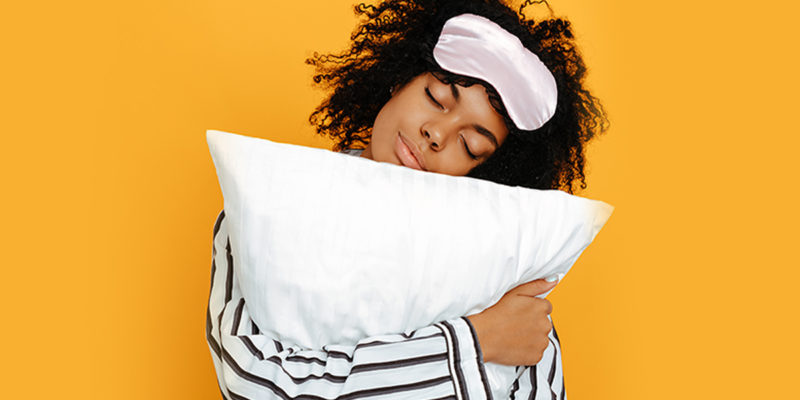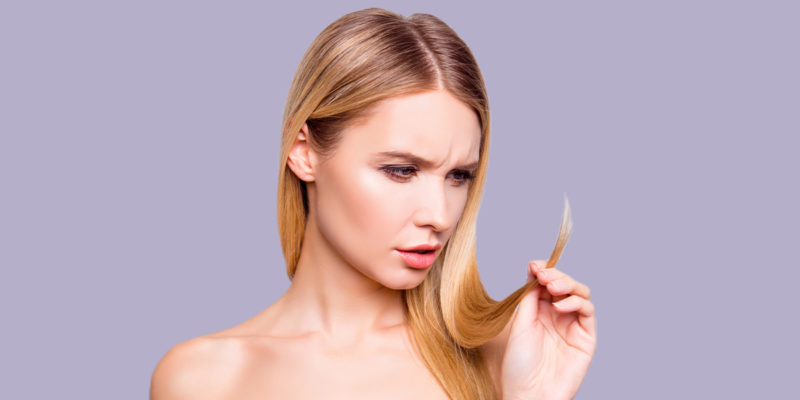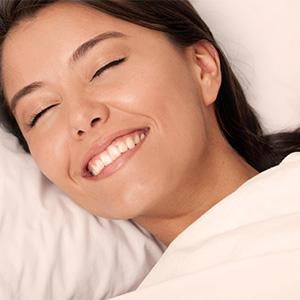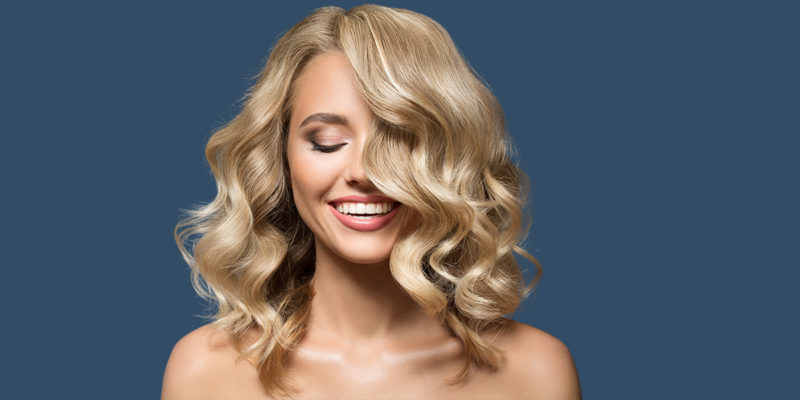Relaxing Sound to Help You Sleep

There is nothing worse than lying awake staring at the ceiling, fatigue building into a headache at your temples, listening to that endless, awful ringing in your ears. I don’t even have tinnitus, and I can’t stand that ringing!
When I was younger, I didn’t notice it as much, but then again, that makes sense. I grew up in the suburbs, and while they weren’t exactly noisy, they weren’t silent either.

I then spent some time in the city, and the traffic noises outside the window were pretty much endless.
Then I moved to the country. I was so relieved at the quiet, but I discovered something on the very first night, and that was that the quiet was deafening. It was so thick that I felt like it was smothering me; it felt like almost a physical thing.
And since there was nothing else to hear, that buzzing, ringing sound in my ears that I usually don’t notice at all got to be really annoying. I can only imagine how bad it is for people who actually have tinnitus!
Discover in 7 questions why you have problems sleeping at night, if you have insomnia, and uncover proven ways to sleep better. Take The Sleep Quiz Now!
Not only that, but sensory deprivation isn’t really a plus for me. It makes me feel anxious, panicky. A little noise, the right noise, helps me feel grounded and safe.
I did quickly make the discovery that turning on my air conditioner made a difference, and not just because it was summertime and the cool air was welcome.
The noise, if anything, was even more helpful!
Listening to it seemed to naturally clear my thoughts, and it effectively blocked out the ringing static in my ears. Not only did I fall asleep faster, but I slept more deeply and woke up feeling refreshed.
And then it started getting cooler as autumn set in, and I realized that I couldn’t keep running the AC or the fan. But I couldn’t put up with the silence either, and that meant I was going to need to invest in a white noise generator.
That’s when I started researching relaxing sounds that make you sleep! As it turns out, noise is a powerful thing. Just as the wrong noises can keep you awake, the right noises can help you to doze off. Let’s take a look at how it works!
Why Does White Noise Help Us Sleep?
The main type of relaxing sound that helps most people sleep is called white noise. White noise is noise which contains many different frequencies, all with equal intensities. It’s got a number of applications in music production, acoustics, electronics engineering, and yes—tinnitus treatment. White noise effectively masks the noise of tinnitus. But it has another important property which helps you sleep, and that’s consistency.
Essentially, there are two common reasons that people have a hard time sleeping as relates to the noise in their environments:
- Too little noise (the silence of the countryside, for example)
- Too much noise (a snoring partner, a roommate’s noise, sounds outside in the street, etc.)
White noise helps to break up silence for the obvious reason of being … well, noise. But how does it help with situations where there is too much noise? Just as it drowns out the sound of tinnitus, it also drowns out environmental noises, and helps to kind of pave over their randomness with something more consistent and predictable (but not too predictable; if something has an identifiable loop, it may keep you awake).
According to Popular Science sudden sounds are a plague to light sleepers, who may jerk awake at the slightest unexpected noise.
Bonus: Download This 7-Day Sleep Reset that will show you exactly how to tackle your worst sleep problems quickly.
It’s noise itself that’s the problem for most people, it’s simply the unexpected changes in noise levels. It may take nothing more than a sudden snort from a snoring partner to wake you up or prevent you from falling completely asleep. The Sleep Foundation reports that noises are more likely to wake people from light sleep (stages 1 and 2) than deep sleep (stages 3 and 4).
Interestingly enough, they also state that a recent study discovered that people who sleep soundly have unique brain activity which protects them from noise. Those who are lighter sleepers are simply more sensitive to auditory disruptions to their rest.
That means that if you sleep next to someone who could sleep through a house burning down, but you jerk awake at the slightest bump in the night, your brain waves are different.
A Whole Spectrum of Noise

It turns out that white noise isn’t the only type of noise which may help you sleep.
There are many other “colors” of noise which are less well-known, but which may be a better fit for some sleepers.
These colors are separated according to their spectral density, that is to say, the distribution of their frequencies.
- White noise: With white noise, the frequency spectrum is flat. All the frequencies have the same output power. White noise takes its name from white light, where every band of the spectrum is equally bright. As an interesting tidbit, white noise actually can be used as a basis for random number generators, such as Random.org White noise is the static you hear on the radio when you can’t pick up a signal, or the sound of surf on the beach.
- Pink noise: Like white noise, pink noise contains all audible frequencies, but with a different distribution. The power per hertz in pink noise goes down as the frequency goes up, so the lower frequencies are louder and the higher frequencies are softer. According to the Gilden Lab at the University of Austin at Texas, pink noise crops up in heartbeat rhythms, traffic flow, and quasar luminosity.
- Green noise: This has a distribution pattern similar to pink noise, only with some extra emphasis at 500Hz. Intriguingly enough, it is an average of noises sampled over a very long time period from various outdoor sites. It is considered to be the background noise of the Earth.
- Brown noise: Brown noise is also known as Brownian noise or red noise. All of these refer to the same thing, and no, they have nothing to do with "the brown note” “Brown” in the name instead refers to “Brownian motion.” This type of noise has a distribution that’s inversely proportional to its frequency squared. Basically, as the frequency goes up, the power goes way down, fast. While “brown” in the name has nothing to do with light colors, the alternate name “red” does refer to red light. Red light is the lowest visible wavelength. Red, or brown, noise likewise is weighted toward the lower frequencies. The sound is much like white noise, but deeper, more of a roar.
- Blue noise: This is like pink noise, but inverted; it is the higher frequencies that are emphasized, not the lower ones. Blue noise takes its name from the visual spectrum as well; blue light has a shorter wavelength than red, yellow, or green.
- Violet noise: This is the inversion of Brownian noise. It is sometimes used as a treatment for tinnitus, since the higher pitched tone can mask the tinnitus noise well (except of course for sufferers who hate the high pitch to begin with).
- Grey noise: This is noise which is distributed toward both ends of the spectrum—low and high frequencies—without a lot of weight in the middle. Amusingly enough, this seems to resemble my preferred setting on Winamp.
- Orange noise: This isn’t one you are likely to find useful. A few select frequencies are eliminated. Orange noise is deliberately out of tune, and is useful for checking tuning in musical applications.
- Black noise: This one has variable definitions, generally either silence, or noise cancellation.
So as you can see, certain types of noise are not helpful when it comes to sleeping, but several have the potential to be very helpful, and not just white noise. If low frequency sounds have a positive effect on you, you may want to try pink or Brownian noise.
If you suffer from tinnitus and do not mind higher frequencies, you may find blue or violet noise perfect for masking that ringing in your ears. I am guessing that you will intuitively know what is right for you. Most people seem to have one or two options they feel particularly comfortable with.
Nature Sounds - Relaxing Sound to Help You Sleep
If you like the idea of using relaxing sounds to help you sleep, but you are not that keen on the white noise or similar sounds, you might prefer to go with nature sounds instead.
Nature sounds, as it turns out, are ideal for sleeping.
They include fluctuations in frequency and loudness that follow fairly predictable patterns, without actually being flat-out repetitious.
The fluctuations are not enough to interfere with sleep, but they keep the sounds from being distracting through annoying reiteration.
Psychologically, they seem to have a similar effect to white noise, and likewise are great for masking other sounds. Just think about a rainy day. If you have loud neighbors, have you ever noticed how much harder it is to hear them when it’s raining outside, even when the rain itself isn’t actually that loud? That is a great example of a nature sound’s noise-canceling powers at work.
You can buy a white noise machine that can generate both white noise and nature sounds. Some models are battery-powered and others can plug into the wall. Some will shut-off after a certain amount of time, while you can leave others running all night.
I decided to hunt through YouTube to see what else I could find that you can use for free. Here are some popular nature sound videos, many of which you can run all night long. They feature high-quality audio, and I believe that some of them have been recorded in one long single take.
This is great for eliminating unnatural repetition:
Winter wind:
Waterfall and birds:
Forest sounds:
Rain and thunder:
Ocean:
Birdsong:
Rainforest:
Stream in a cave:
Going through those videos, I thought they were pretty exciting!
The only drawback to be aware of with these is the fact that they are on YouTube, and as such, some of them play ads in the middle. If you scroll down, you will find some users complaining about being woken at 5 in the morning by an advertisement.
Many users still report that they enjoy using them anyway. I still haven’t run any of these through the night (nor any of the white noise/etc. videos from above), so I cannot vouch for their quality from start to finish. They look (and sound!) very promising, though.
Consider Listening to Music
Another idea which may work well for some people is music. Which music will work for you will depend a lot on your personality, but I’ve found that most music does not work well for me. Music with lyrics in English tends to be distracting.
Music with lyrics that are in a language I do not understand are far less distracting. They don’t give my mind anything to latch onto and analyze. Falling asleep requires you to let go of your ego, so you don’t want to listen to anything that will keep you too focused on specifics. Emotionally charged music can be problematic for that reason.
Instrumental music works best for me, and preferably something which doesn’t have a strong hook. So pop music is usually out. Better for me is either classical music or some form of electronic music. The more the music “meanders” without repetition, the better in most cases. Or if there is repetition, I find something that loops a rhythm instead of a melody is best.
Experiment, and you will find the choices which are best for you. You might end up having luck with something entirely different.
If you do not listen to music while you head to bed, but you do listen to music late at night, I suggest sticking with similar choices. If you are prone to "earthworms” like I am, you will find that music like this is less likely to get stuck in your head. Earworms can actually keep me awake if I’m not careful, so I tend to choose mellow music before bedtime. That way it won’t keep looping in my brain and distracting me.
ASMR
If you’re not familiar with ASMR, it will probably strike you as somewhat bewildering at first glance. Query “ASMR” on YouTube, and you will pull up thousands of “whispering” videos. They are quite literally (mostly) videos of people whispering very close to high-quality microphones on an incredibly wide range of topics. You will also find numerous videos of assorted ASMR “trigger” noises like crinkly bags and tapping sounds.
Watch a few of these videos (well, listen mostly), and you may find yourself hooked.
ASMR stands for “autonomous sensory meridian response.” It refers to a perceptual phenomenon which isn’t backed up by a whole lot of scientific evidence, but then again, there’s a general lack of research, largely owing to scientists not being sure how to start.
What exactly is it? According to people who report experiences of ASMR, it is a kind of pleasant tingling sensation usually felt on the scalp or back. I did used to get this effect while getting hair cuts (a commonly reported trigger), and had no clue what it was until more than a decade later. Well, still nobody knows what it is—but other people do experience it. For a lot of people, ASMR soothes anxiety, and can help treat and prevent panic attacks, anxiety, and … you guessed it, insomnia.
ASMR videos seek to trigger this sensation in people who are susceptible to it. I haven’t managed to have anything except a real-life haircut ever trigger an ASMR response, but thousands of people across the internet swear by them.
Plus, you may be responsive to these videos on a psychological level even if you aren’t responsive to them on a physical level. Some of these video creators have done a wonderful job weaving in other techniques as well, like hypnosis. I’ve never been to see a therapist, but I imagine if you find a good one, you walk out of a session feeling about the same as I did after watching one of these videos.
A lot of people use ASMR videos as sleep aides. Tons of other people will never figure out why a huge population on the internet is obsessed with the sounds of crinkly packaging or soft whispering! But if ASMR works for you, you may find it makes a perfect auditory antidote for insomnia.
What about silence?
A lot of people can’t sleep in a totally silent environment, whether because of tinnitus or simply because they find it psychologically disruptive (again, for me, it is an anxiety-inducing experience). But some people love silence, and find it ideal for sleep!
If that is you, and there are annoying noises in your environment that you need to block out, don’t forget about the handiness of ear plugs.
They work surprisingly well, and they aren’t all that uncomfortable once you get used to wearing them. You may forget they are there after you get used to them.
Need to Help a Baby Sleep?
Are you looking for relaxing sounds to help your baby sleep? Sometimes that can be the key to helping you sleep too! It’s tough to get some shut-eye when your baby wakes you up crying every hour, or never gets to sleep in the first place. White noise seems to help many babies to sleep. Babies can also be very responsive to the sound of a heartbeat.
You can find heartbeat sounds online, and many white noise machines also produce heartbeat sounds as one of the options. You can also buy your child a cuddly plush toy which doubles as a white noise generator. These adorable sleep sheep can product a heartbeat sound, or generate the sound of ocean surf, spring showers, or whale songs.
What If Your Needs Differ From Your Partner’s?
If you share a room with someone, it can be a challenge to make the conditions right for both of you. In some cases, it may be easy, because you both share similar brain waves, and your responses to different auditory triggers match up. But in other cases, you may find that a noise one of you considers relaxing is disruptive to the other.
For cases like those, you can experiment and see if there are any sounds that work for both of you. If you cannot find anything, though, don’t despair—headphones or earbuds work just fine for a lot of people! It may take some getting used to, but once you do, you may find that it’s just the solution to insomnia you’ve been searching for.
According to a poll by the National Sleep Foundation in 2005,
“more than half of people reported at least one symptom of insomnia … at least a few nights per week within the past year. Thirty-three percent said they had at least one of these symptoms every night or almost every night in the past year.”
The SNF goes on to say that one of the two most common symptoms was waking up a lot during the course of the night.
When your auditory sleep environment isn’t optimized to your brain waves and your personal needs, it is easy to jerk awake at the slightest sound. And if you suffer from tinnitus, silence can just amplify that awful ringing in your ears.
The solution to your insomnia may be closer than you think, however! Try out some of the different types of “white” noise I have shared as well as the nature sounds, and check into ASMR if you think it might work for you. You may very well find that the right sounds are the key to a good night’s sleep!






